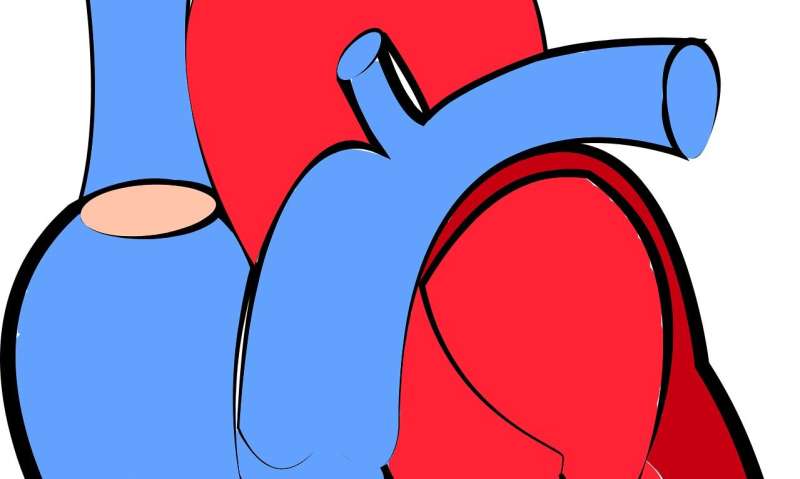Credit: CC0 Public Domain
A team of Massachusetts General Hospital (MGH) investigators has discovered, for the first time, that the immune cells called macrophages contribute to a type of heart failure for which there currently is no effective treatment. In their report published in the February issue of the Journal of Experimental Medicine, the MGH team describes finding how macrophage activity leads to the development of heart failure with preserved ejection fraction (HFpEF) in mouse models of the condition, which accounts for around half of all human heart failure cases.
"We show that macrophages - white blood cells primarily known for removing cellular debris, pathogens and other unwanted materials - are actively involved in the development of HFpEF," says Maarten Hulsmans, PhD, a research fellow in the MGH Center for Systems Biology and lead author of the paper. "These findings put macrophages on the map when it comes to HFpEF therapy and open up previously unexplored treatment options."
The concept of heart failure traditionally referred to a loss of the organ's pumping capacity, which is called systolic heart failure. But in HFpEF the heart retains the ability to pump or eject blood into the circulation. What is compromised is the ability of the heart muscle to relax and allow blood to flow into the left ventricle, reducing the amount of blood available to pump into the aorta. Symptoms of HFpEF are similar to those of heart failure in general, but since factors contributing to the condition are not well understood, it has been difficult to find promising therapies.
Interactions among cells within the heart - including macrophages - are essential to normal cardiac function but can also contribute to problems. For example, after the heart muscle is damaged by a heart attack, macrophages induce the cells called fibroblasts to generate the connective tissues that help reinforce damaged tissue. But excessive fibroblast activation can lead to the distortion and stiffening of tissues, further reducing cardiac function.
To explore a potential role for macrophages in HFpEF, the MGH team examined cardiac macrophages in two mouse models that develop the sort of diastolic dysfunction - impaired relaxation of the heart muscle - that characterizes HFpEF. Those animals were found to have increased macrophage density in the left ventricle and exhibited elevated levels of a factor called IL-10, which is known to contribute to fibroblast activation. Deletion of IL-10 from cardiac macrophages in one model, in which the development of hypertension is induced, prevented the upregulation of macrophages and reduced the numbers and activation of cardiac fibroblasts. Levels of cardiac macrophages were also elevated in tissue biopsies from human patients with HFpEF, as were levels of circulating monocytes, which are precursors of macrophages.
"Not only were numbers of inflammatory cardiac macrophages increased in both the mice and in humans with HFpEF, but their characteristics and functions were also different from those in a healthy heart," says Hulsmans. "Through their participation in the remodeling of heart tissue, these macrophages increase the production of extracellular matrix, which reduces diastolic relaxation. Our findings regarding the cell-specific knockout of IL-10 are the first to support the contribution of macrophages to HFpEF."
Senior author Mathias Nahrendorf, MD, PhD , of the Center for Systems Biology, adds, "Heart muscle cells and fibroblasts have been considered the major contributors to HFpEF. Our identification of the central involvement of macrophages should give us a new focus for drug development. And since macrophages naturally take up materials for disposal, inducing them to ingest drugs carried in by nanoparticles could limit their contributions to the development of HFpEF." Nahrendorf is a professor of Radiology at Harvard Medical School.
More information: Maarten Hulsmans et al, Cardiac macrophages promote diastolic dysfunction, The Journal of Experimental Medicine (2018). DOI: 10.1084/jem.20171274
Journal information: Journal of Experimental Medicine
Provided by Massachusetts General Hospital






















